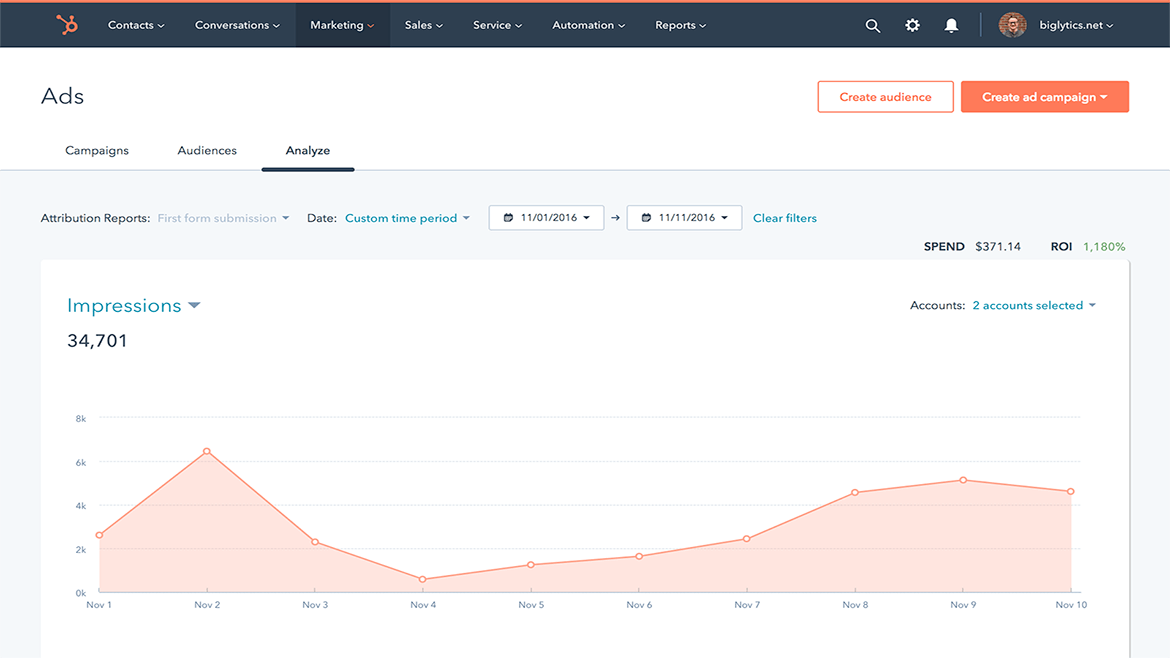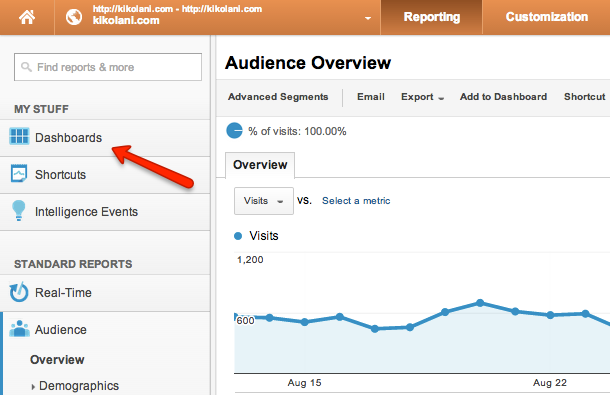Effective marketing campaigns don’t materialize out of thin air. They rely on a unique combination of creativity and science.
To accomplish your company’s marketing goals, as a campaign manager it’s your job to find the perfect balance of these two elements. A ‘set it and forget it’ approach won’t help you get results. Campaign management is a process that is ongoing and never-ending.
A campaign can always be improved. It’s a circular method of testing, optimizing and testing again. And again. Continually evaluating and learning from the successes and failures of past online-marketing campaigns is what puts you on the right path.
Successful Campaign Management Starts with Goals
Before you start launching any campaigns, you must have a full understanding of your company’s marketing strategy and key performance indicators (KPIs).
- Do you want to increase sales or downloads?
- Are you trying to increase brand awareness?
- Is the goal to improve retention or cross-sell products?
Campaign management is all about knowing what you want your ad campaign to achieve and then checking the metrics that relate to those goals. Most companies run multiple campaigns across a variety of platforms, so you must understand the ins and outs of each channel. A campaign that performs well on one platform might fall flat on another.
Running a campaign with a blog post on Facebook, for example, could resonate with your target customer, but run that same blog post on a native-advertising campaign and it could be totally ineffective. Similarly, an ad might work well with women aged 25-45 on Twitter, but not perform well with the same age group on LinkedIn. You must have a deep understanding of who your audience is and which platforms appeal to different audience segments.
[marketoform id=8954]
When you combine that information with appealing ad creatives, you can optimize each campaign’s KPIs so that it performs as best as possible for the KPIs you monitor.
Campaign Management Tools
Before you begin thinking about campaign optimization, you must have all the right tools in place. These are your go-to sources when it comes to reviewing analytical data and performance. Check these tools daily to stay on top of campaign performance.
The campaign-management tools that you use will probably depend on what your company has in place and what the budget is for purchasing additional tools.
Customer Relationship Management Software
If your company uses a customer relationship management solution (CRM), such as Hubspot or Salesforce, to store its customer data, use that software for your campaigns too.
CRMs allow you to create landing pages, easily segment customers and, most importantly, understand your campaign data. They also come with plenty of pre-made reports to help you track performance and your campaign’s return on investment (ROI).

Platform-specific Dashboards
Each advertising channel supplies its own dashboard for launching and optimizing campaigns, as well as for reviewing the results and the campaign’s impact.
You can select the metrics you’re most interested in and export your campaign data into Excel for further analysis. Platform-specific ad managers and dashboards are great if you don’t have a CRM, but you must collect info from every platform and look at it all together – not in a silo.
Google Analytics
Google Analytics can serve as a one-stop shop for tracking the success and ROI of all of your campaigns.
By adding tracking codes to all of your campaigns and setting up ‘goals’ in the platform, you can track a campaign’s performance and know which channels are driving the desired actions and at what cost.
Although the wealth of the information you get from Google Analytics is worth its weight in gold, it is a complex system. If you’re not familiar with it, you can learn more through Google’s Analytics Academy.

Now that your toolbox is ready, it’s campaign time:
Ready, Set, Launch
When you have put together the creative elements for your campaign – copy and calls-to-action (CTAs), content or landing pages, and graphics – it’s time to run your ad on your chosen platform. When your campaign is live the real campaign management work begins.
Campaign Optimization
When to optimize
Think of the initial campaign management phase in terms of monitoring. Your campaigns need to run for a set amount of time before you can see results.
It’s nearly impossible to have an exact timeline because platforms and budgets can significantly impact on how quickly actionable data is available.
Campaigns with large budgets may give you insights daily, whereas smaller budgeted campaigns can take longer to deliver enough data. Native-advertising platforms often recommend letting your ad run for a week or more before making any decisions. You must continually check on an ad’s performance and determine when you’ve collected enough data points to begin optimizing.
It is not necessary to decide really quickly, but a hard and fast rule when it comes to timing is never to wait until you run out of budget to start optimizing.
You’ll be throwing all your money away.
Optimization needs to happen when you still have a budget left so you can continue to shift money towards the campaigns meeting your KPIs. Review your online-marketing campaigns at set intervals and be prepared to make changes quickly.
One Element at a Time, Always
Since you’re likely to run multiple versions of your online-marketing campaign from the get-go, pretty quickly you’ll be able to see which ones are reaching your goals. That’s when the fun part – campaign optimization – begins.
It’s like one of those levels in Candy Crush when you have a limited time to reach a certain point total, except in this version the point total is your KPI, and the timer is your campaign budget.
Remember, campaign optimization comes in many forms. You’ll likely need to do a lot of testing before you find your sweet spot.
Optimizing Creative Aspects
One place to start the campaign optimization process is your creative. The key here – and with all optimization – is to A/B test one element at a time. That could mean trying out different graphics while keeping the content exactly the same, for example.
Maybe your campaign had a high number of impressions, but your audience wasn’t taking the next step by downloading your app or signing up for a demo. This could indicate that there’s a problem with your CTA.
Which creative elements can you test? Here are a few to consider:
- Copy: Is it compelling? Too long or too short? What about your headline?
- Graphics: Do the images in your ads, on landing pages and elsewhere speak to your audience?
- CTAs: Is the action explicit and easy to see? Should it be moved to a different place on the landing page?

Optimizing technical aspects
Beyond creatives, what else can you optimize? Just about everything. Consider checking:
- Audience targeting: Did you choose the right audience? Is it too broad or too narrow?
- Locations: Are specific geographical locations outperforming others?
- Days and times: Do weekdays bring more conversions than weekends? Are there differences between mornings and evenings?
- Devices: How are your campaigns performing on mobile, desktop and tablets?
- Keywords and negative words: Are there specific keywords that are not performing well?

Campaign Optimization to Meet KPIs
Always remember, you are optimizing your campaigns to achieve your KPI.
Optimizing metrics that don’t align with campaign objectives is a waste of time and money. Knowing which metrics are the most relevant to your campaign is critical.
- If you’re running a conversion-based campaign, focus on metrics such as the click-to-conversion rate and cost-per-conversion.
- If you’re running a social-media campaign and the goal is to increase your followers, then you need to look at the cost-per-fan (CPF) and know what the click-to-like rate is.
As you discover which ads are meeting your KPIs, shift your budget towards those and continue refining and optimizing. It’s all part of the campaign management process.
Presenting Your Campaign Results
At some point, you’ll need to present all of your hard work to your boss. Showing the higher-ups the successes you’ve had and the impact you’ve made is just as significant as the daily campaign management work you do.
Executives are always most interested in the budget spent and how it relates to the campaign outcomes. It’s not enough to show that you brought in 200 leads. Although this could be a substantial number, make sure you’re prepared to show the cost per lead.
Consider whether your superiors like to see hard numbers in Excel or are whether they are more likely to understand graphs and visual charts?
Having this answer ahead of time will put you on the right track. In either case, present your results in terms that your boss will understand and according to the KPIs.
Wrap Up
The perfect marketing campaign doesn’t exist. Campaigns can always be improved. Iterations and continuous optimization are the ways forward, no matter how well (or poorly) your campaign does. Learn from your wins and most importantly from your losses.
Remember the following every day:
- Know your campaign objectives ahead of time
- Know your audience, your platforms, and your campaign tools
- Give your campaign enough time to produce valuable results
- A/B test campaign elements as much as possible – but only one aspect at a time
- Always optimize campaign elements that help you to reach your KPIs
- Present your results in terms of achievements and budget